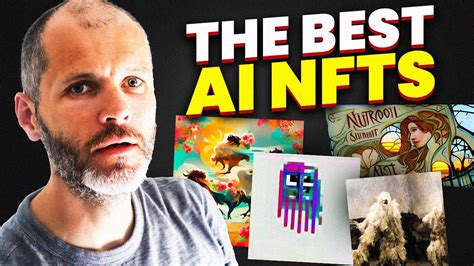The Artistic Potential of AI-Generated NFTs
In the world of digital art, Artificial Intelligence (AI) has been transforming traditional mediums like painting and music into new forms of expression. One of the most exciting areas of innovation is in Non-Fungible Tokens (NFTs), a type of digital collectible that can be bought, sold, and traded online. But what about AI-generated NFTs? Can they be considered art? And how do they differ from traditional human-created art?
The Rise of AI-Generated Art
Artificial Intelligence has been rapidly advancing in recent years, with significant breakthroughs in machine learning, natural language processing (NLP), and computer vision. These advancements have enabled the creation of sophisticated digital art pieces that were previously unimaginable. For instance, algorithms can generate images that mimic human brushstrokes, create fractals, or even compose music.
AI-Generated NFTs: A New Form of Digital Art
One of the most exciting applications of AI-generated art is in Non-Fungible Tokens (NFTs). These digital collectibles represent unique items, such as rare images, music tracks, or even virtual real estate. By generating AI-powered art pieces, artists and developers have created a new type of NFT that can be bought, sold, and traded online.
Key Characteristics of AI-Generated NFTs
While traditional human-created art is often characterized by unique styles and techniques, AI-generated NFTs exhibit distinct characteristics. These include:
- Predictability: AI algorithms are capable of generating predictable patterns, which can lead to a sense of familiarity or even boredom.
- Originality: Despite the predictability, AI-generated art pieces can still be considered original in their own right, as they often rely on complex mathematical models and algorithms.
- Autonomy: AI-generated art is often more autonomous than traditional human-created art, which may rely on external influences or constraints.
The Artistic Potential of AI-Generated NFTs
While AI-generated NFTs may not be considered “true” art in the classical sense, they do hold significant artistic potential. They can:
- Offer new perspectives

: By generating art from scratch using algorithms and mathematical models, developers can explore new styles and techniques that human artists might not have thought of.
- Provide new forms of engagement: AI-generated NFTs can be designed to interact with users in various ways, such as through gamification or social media platforms.
- Enable new business models: The creation and sale of AI-generated art pieces can lead to innovative revenue streams and new opportunities for artists and developers.
Challenges and Limitations
While AI-generated NFTs have the potential to revolutionize the digital art world, there are several challenges and limitations to consider:
- Lack of human touch: AI algorithms often lack the emotional resonance or personal connection that traditional human-created art typically embodies.
- Artistic intent: It can be difficult for humans to convey the full artistic intent behind an AI-generated piece, which may lead to misunderstandings or misinterpretations.
- Authenticity and ownership: As with any digital collectible, questions surrounding authenticity and ownership become increasingly important.
Conclusion
The artistic potential of AI-generated NFTs is undeniable. By harnessing the power of machine learning, natural language processing, and computer vision, developers can create innovative forms of digital art that push the boundaries of human creativity. While traditional human-created art may still hold a special place in our hearts, AI-generated NFTs offer new possibilities for artistic expression and engagement.

